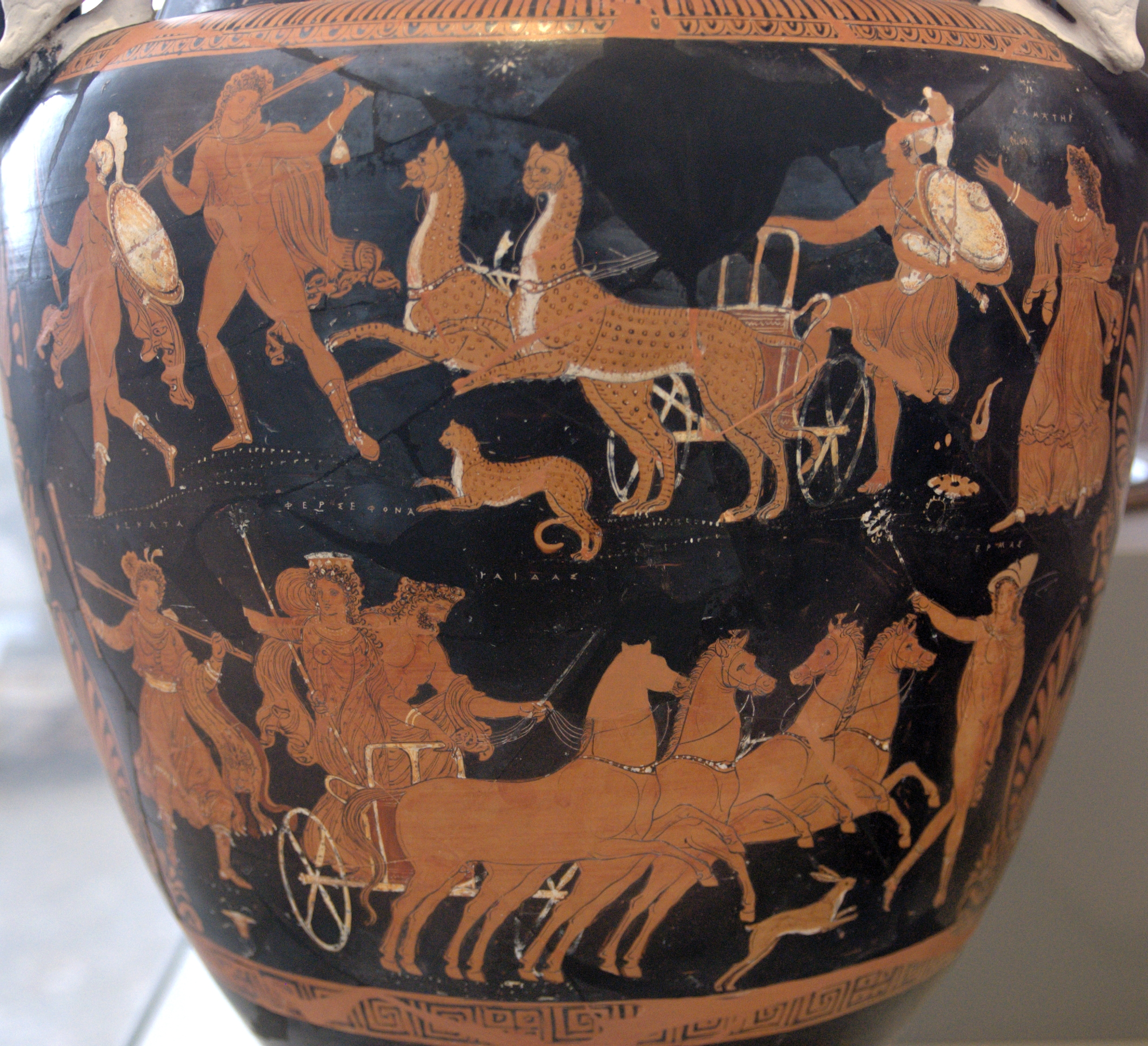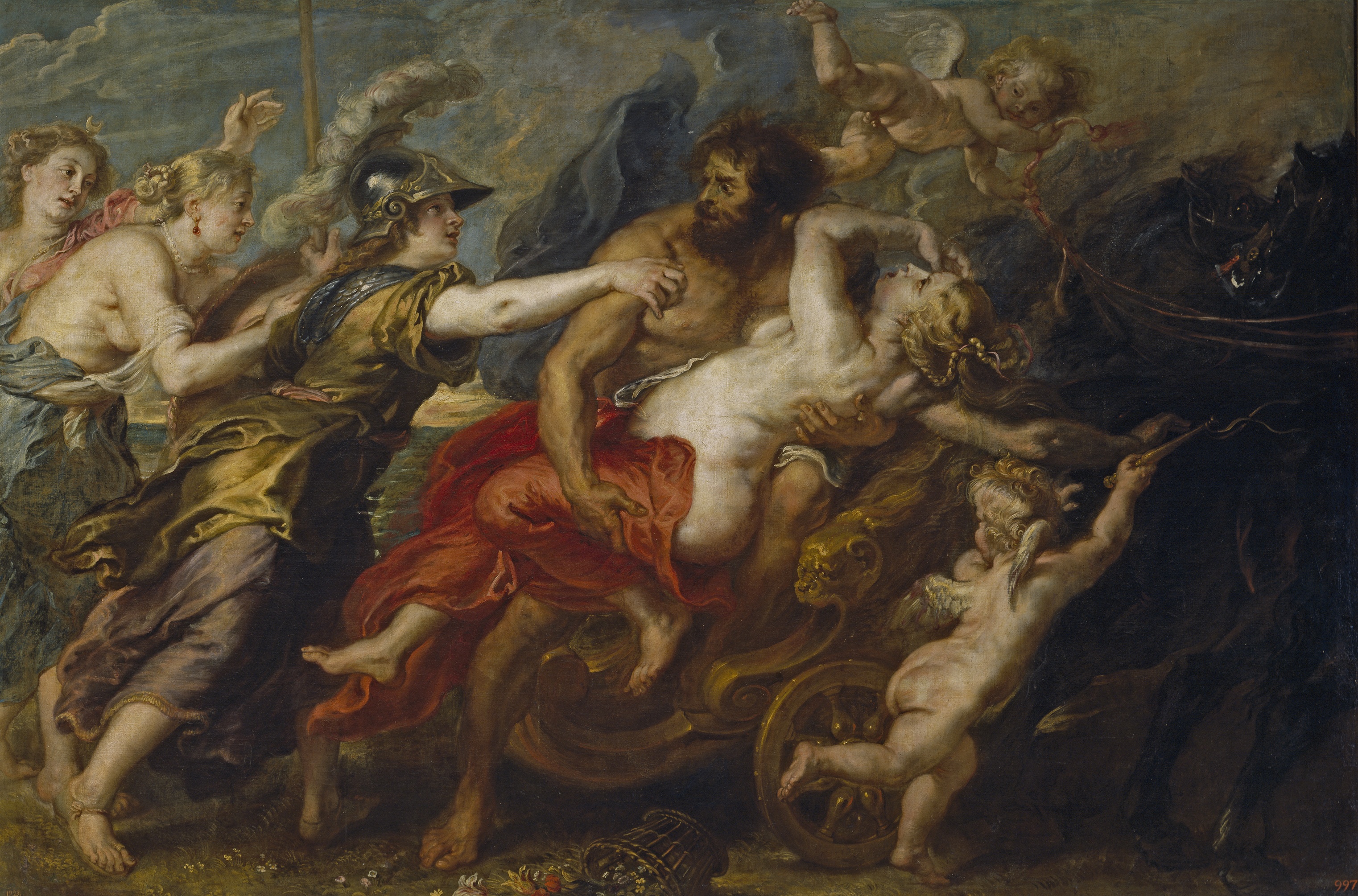Rape of Persephone on:
[Wikipedia]
[Google]
[Amazon]
 The Rape of Persephone, or Abduction of Persephone, is a classical mythological subject in Western art, depicting the
The Rape of Persephone, or Abduction of Persephone, is a classical mythological subject in Western art, depicting the
 Created in 1636 and 1637,
Created in 1636 and 1637,
 The Rape of Persephone, or Abduction of Persephone, is a classical mythological subject in Western art, depicting the
The Rape of Persephone, or Abduction of Persephone, is a classical mythological subject in Western art, depicting the abduction
Abduction may refer to:
Media
Film and television
* "Abduction" (''The Outer Limits''), a 2001 television episode
* " Abduction" (''Death Note'') a Japanese animation television series
* " Abductions" (''Totally Spies!''), a 2002 episode of an ...
of Persephone
In ancient Greek mythology and religion, Persephone ( ; gr, Περσεφόνη, Persephónē), also called Kore or Cora ( ; gr, Κόρη, Kórē, the maiden), is the daughter of Zeus and Demeter. She became the queen of the underworld aft ...
by Hades
Hades (; grc-gre, ᾍδης, Háidēs; ), in the ancient Greek religion and myth, is the god of the dead and the king of the underworld, with which his name became synonymous. Hades was the eldest son of Cronus and Rhea, although this also ...
. This then resulted in the myth surrounding the creation of the seasons, as Demeter
In ancient Greek religion and Greek mythology, mythology, Demeter (; Attic Greek, Attic: ''Dēmḗtēr'' ; Doric Greek, Doric: ''Dāmā́tēr'') is the Twelve Olympians, Olympian goddess of the harvest and agriculture, presiding over crops, ...
mourned the time that Persephone spent in the Underworld with her husband. In the context of the subject, the word "Rape" refers to the traditional translation of the Latin raptus, "seized" or "carried off", and not to sexual violence.
Mythological background
Persephone is the daughter ofZeus
Zeus or , , ; grc, Δῐός, ''Diós'', label= genitive Boeotian Aeolic and Laconian grc-dor, Δεύς, Deús ; grc, Δέος, ''Déos'', label= genitive el, Δίας, ''Días'' () is the sky and thunder god in ancient Greek relig ...
and Demeter
In ancient Greek religion and Greek mythology, mythology, Demeter (; Attic Greek, Attic: ''Dēmḗtēr'' ; Doric Greek, Doric: ''Dāmā́tēr'') is the Twelve Olympians, Olympian goddess of the harvest and agriculture, presiding over crops, ...
. Hades wished to make her his wife, so he got permission from her father Zeus and help from Gaia
In Greek mythology, Gaia (; from Ancient Greek , a poetical form of , 'land' or 'earth'),, , . also spelled Gaea , is the personification of the Earth and one of the Greek primordial deities. Gaia is the ancestral mother—sometimes parthen ...
to abduct her into the Underworld
The underworld, also known as the netherworld or hell, is the supernatural world of the dead in various religious traditions and myths, located below the world of the living. Chthonic is the technical adjective for things of the underwo ...
. When Persephone was picking flowers in a field, Hades emerged on his chariot from a crack on the earth, and carried off the unwilling Persephone; only Hecate
Hecate or Hekate, , ; grc-dor, Ἑκάτᾱ, Hekátā, ; la, Hecatē or . is a goddess in ancient Greek religion and mythology, most often shown holding a pair of torches, a key, snakes, or accompanied by dogs, and in later periods depict ...
and Helios
In ancient Greek religion and mythology, Helios (; grc, , , Sun; Homeric Greek: ) is the god and personification of the Sun (Solar deity). His name is also Latinized as Helius, and he is often given the epithets Hyperion ("the one above") an ...
witnessed the abduction, and later told Demeter.
Rubens
 Created in 1636 and 1637,
Created in 1636 and 1637, Peter Paul Rubens
Sir Peter Paul Rubens (; ; 28 June 1577 – 30 May 1640) was a Flemish artist and diplomat from the Duchy of Brabant in the Southern Netherlands (modern-day Belgium). He is considered the most influential artist of the Flemish Baroque tradit ...
depicted the abduction of Persephone in a piece entitled ''The Rape of Proserpine''. The piece was intended to decorate the lost Torre de la Parada
The Torre de la Parada is a former hunting lodge that was located in present-day Monte de El Pardo in Fuencarral-El Pardo, near the Royal Palace of El Pardo, some way outside Madrid in the Sierra de Guadarrama. It was mostly destroyed by fire whe ...
, and as such was owned by the Spanish Royal family.
This was copied later in the 17th century by Juan Bautista Martínez del Mazo
Juan Bautista Martínez del Mazo (c.1612 – February 10, 1667)
was a Spanish Baroque portrait and landscape painter, the most distinguished of the followers of his father-in-law Velázquez, whose style he imitated more closely than did any o ...
in oil on canvas under the name of ''El Rapto de Proserpina'', and later again reproduced by the Real Establecimiento Litográfico de Madrid in the 19th century for the purpose of printing and distribution.
Rembrandt
Painted in around 1631, ''The Abduction of Proserpina'' has largely been attributed toRembrandt
Rembrandt Harmenszoon van Rijn (, ; 15 July 1606 – 4 October 1669), usually simply known as Rembrandt, was a Dutch Golden Age painter, printmaker and draughtsman. An innovative and prolific master in three media, he is generally cons ...
. Although the painting remains unsigned, the style and composition is highly indicative of being a legitimate Rembrandt. It is currently displayed as a part of Gemäldegalerie, Berlin
The Gemäldegalerie (, ''Painting Gallery'') is an art museum in Berlin, Germany, and the museum where the main selection of paintings belonging to the Berlin State Museums (''Staatliche Museen zu Berlin'') is displayed. It was first opened in ...
permanent exhibit.
Giordano
As part of a set of oil studies intended to be used for painting the ceiling frescoes in the Palazzo Medici Riccardi in Florence, the ''Mythological Scene with the Rape of Proserpine'' was created with the intention of being presented to Marquess Francesco Riccardi for approval before being painted in the palace. Currently, ten of the twelve oil studies created between 1682 and 1685 reside in theNational Gallery
The National Gallery is an art museum in Trafalgar Square in the City of Westminster, in Central London, England. Founded in 1824, it houses a collection of over 2,300 paintings dating from the mid-13th century to 1900. The current Director ...
.
Allori
This painting on a large wooden panel is entitled ''The Abduction of Proserpine''. It was painted in 1570, and spent most of its life residing in the Villa Salviati after being commissioned by the Salviati family.Other Paintings
*''The Rape of Persephone'', a painting in the Macedonian Tomb I in Vergina (Aegae), dating from the mid 4th century BC. This in situ mural is mostly indistinguishable, other than the figures of Hades and Persephone themselves on a chariot. This list is by no means exhaustive, but seeks to highlight some prominent examples of the myth in Western paintings.Sculpture
Examples include: * ''The Rape of Persephone'' from the Roman villa of Chiragan, in Musée Saint-Raymond, Toulouse *''The Rape of Persephone'', byPinturicchio
Pinturicchio, or Pintoricchio (, ; born Bernardino di Betto; 1454–1513), also known as Benetto di Biagio or Sordicchio, was an Italian painter during the Renaissance. He acquired his nickname (meaning "little painter") because of his sma ...
, in the vault of the Piccolomini Library in Duomo, Siena
*''The Rape of Proserpina
''The Rape of Proserpina'' ( it, Ratto di Proserpina), more accurately translated as ''the Abduction of Proserpina'', is a large Baroque marble group sculpture by Italian artist Gian Lorenzo Bernini, executed between 1621 and 1622, when Bernin ...
'' by the Italian artist Gian Lorenzo Bernini
Gian Lorenzo (or Gianlorenzo) Bernini (, , ; Italian Giovanni Lorenzo; 7 December 159828 November 1680) was an Italian sculptor and architect. While a major figure in the world of architecture, he was more prominently the leading sculptor of his ...
, a large Baroque marble sculptural group, executed between 1621 and 1622
References
External links
*{{Commons category-inlinePersephone
In ancient Greek mythology and religion, Persephone ( ; gr, Περσεφόνη, Persephónē), also called Kore or Cora ( ; gr, Κόρη, Kórē, the maiden), is the daughter of Zeus and Demeter. She became the queen of the underworld aft ...
Sexuality in ancient Greece
Deeds of Zeus
Deeds of Demeter
Helios in mythology
Deeds of Gaia